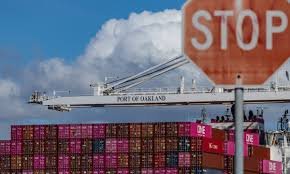April 3, 2025 – Washington, D.C. – The United States government has officially introduced a reciprocal tariff policy, imposing higher duties on imports from countries that levy substantial tariffs on American goods. The new trade strategy, which takes effect April 10, 2025, at 12:01 a.m. EDT, aims to level the playing field for U.S. businesses and reduce trade imbalances.
Key Details of the Reciprocal Tariff Plan
Under the policy, imported goods from specific nations will face tariffs equivalent to those imposed on American exports to those countries. The move follows concerns raised by U.S. manufacturers and trade analysts regarding disproportionate trade barriers in major international markets.
- China – Tariffs on Chinese imports will increase to 35%, mirroring Beijing’s existing duties on American-made machinery and agricultural products.
- European Union – The U.S. will impose a 22% tariff on European cars, wine, and dairy, responding to similar EU restrictions on U.S. exports.
- India – Indian goods will now face a 26% duty, reflecting India’s high tariffs on U.S. medical devices and agricultural goods.
- South Korea & Japan – Both countries will see import duties rise to 24%, equalizing their tariffs on U.S. automobiles and steel.
- Vietnam & Taiwan – Tariffs will reach 40% and 30%, respectively, due to high barriers on U.S. electronic exports.
Economic Justification and White House Statement
The White House Trade Office released a statement emphasizing the necessity of reciprocal tariffs to counteract unfair foreign trade policies.
President Donald Trump, addressing supporters in Detroit, Michigan, reiterated his administration’s stance, saying:
Impact on Businesses and Consumers
- Domestic Manufacturing – U.S. producers in sectors like automobiles, steel, and agriculture are expected to benefit, as foreign competitors face higher import costs.
- Retail Prices – Consumers may see price increases on imported electronics, luxury goods, and certain foreign-produced foods.
- Stock Market Volatility – Financial analysts predict short-term market fluctuations as global trade adjusts to the new tariffs.
Global Reactions and Potential Retaliation
China’s Ministry of Commerce has condemned the U.S. action, calling it “protectionist”, and has hinted at possible countermeasures. The European Commission is also reviewing options for reciprocal tariffs against U.S. exports, with trade officials warning of potential “retaliatory escalation.”





